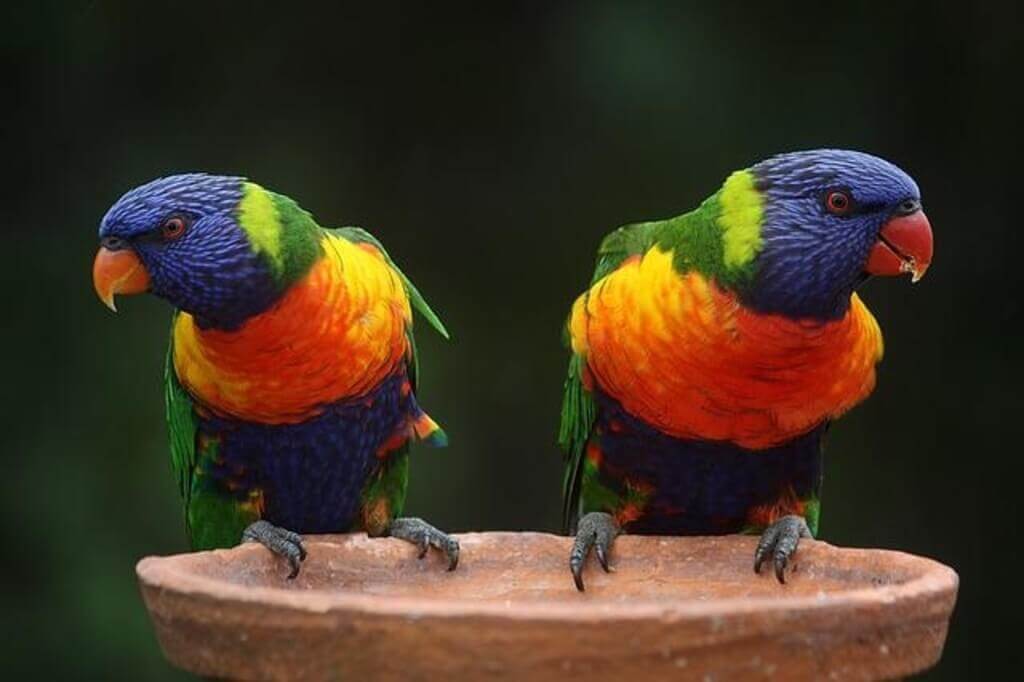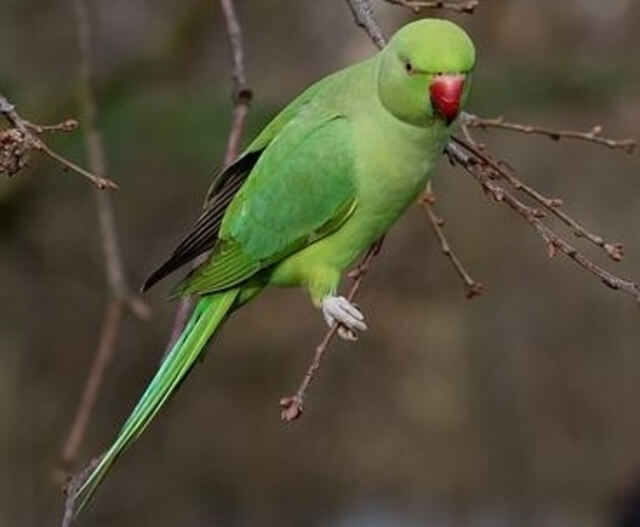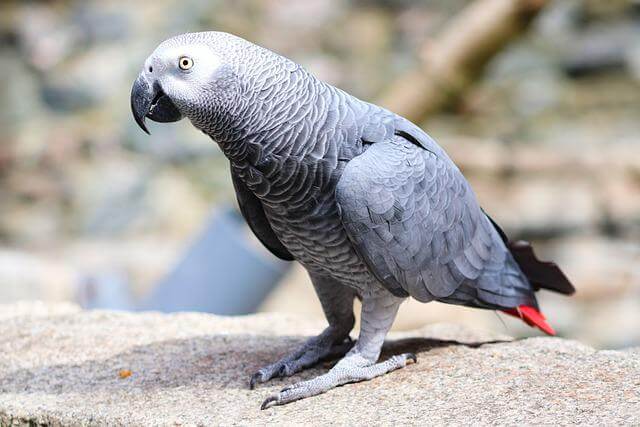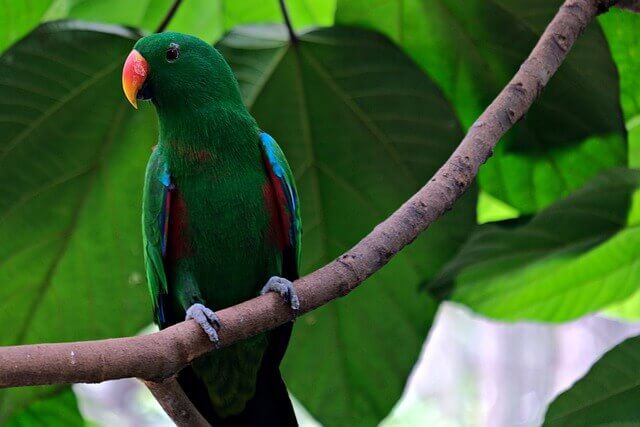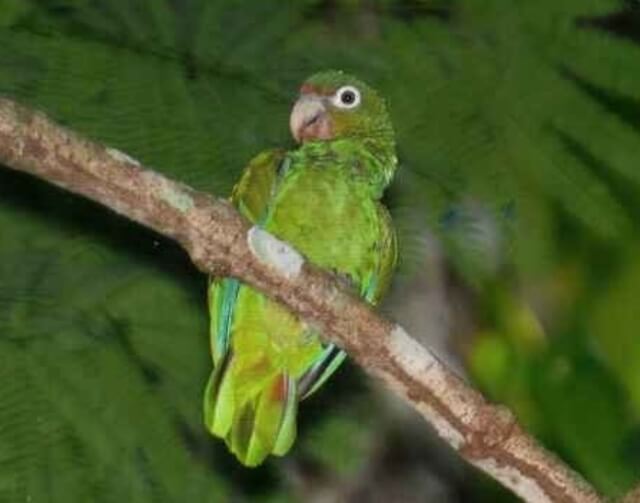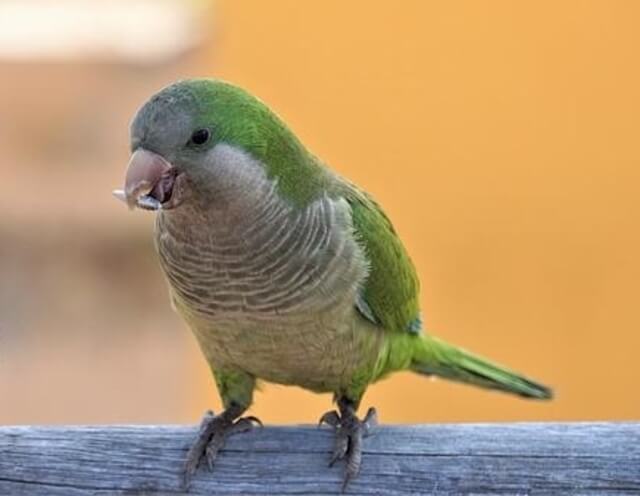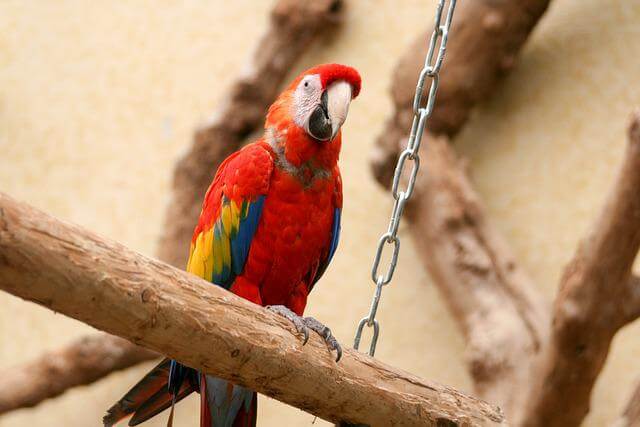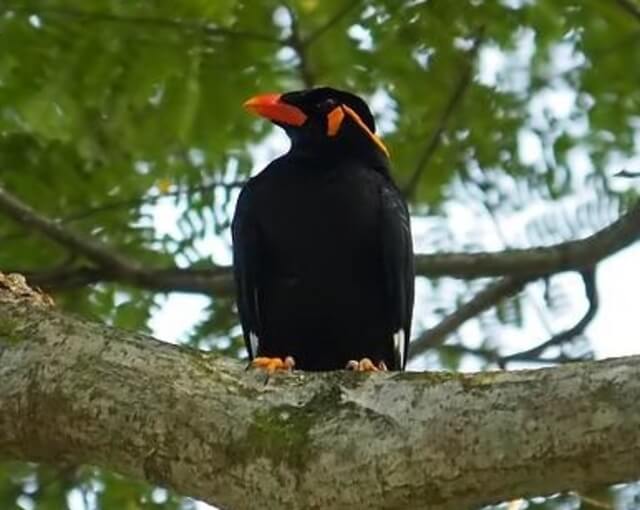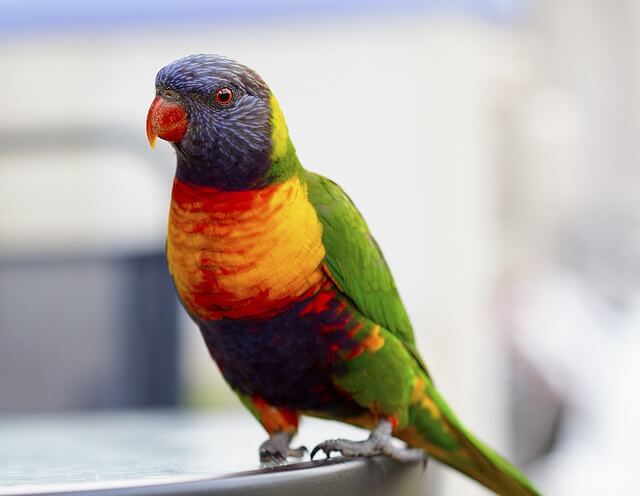Dive into the fascinating realm of pet birds known for their remarkable ability to communicate in our comprehensive guide, “12 Types of Pet Birds That Talk.” Delve into the enchanting world of avian companionship, where each feathered friend brings its unique charm and personality to brighten your home.
Table of Contents
Types of Pet Birds That Talk
Budgerigars (Budgies)
Budgerigars, otherwise known as parakeets, are small, colorful birds that can be taught to speak up to 500 words or more, depending on the bird’s intelligence and willingness to learn. While some people may believe that teaching a bird to talk is a waste of time, those who have taken the time to do so often find that their pet bird can become a cherished member of the family. In fact, many Budgerigar enthusiasts report that their birds can not only mimic human speech, but also understand and respond to commands.
- Range: The Budgerigar is a small, sprightly bird that is found throughout much of Australia. They are the most common pet bird in the world and are known for their intelligence and playful nature. Budgerigars are also called “budgies.”
- Habitat: Budgerigars can be found in many habitats, including forests, shrublands, and even urban areas. They prefer to live in open areas where they can find plenty of food and shelter.
- Size: 7″ in. (18 cm)
- Weight: 30–40 grams (1.1–1.4 oz)
- Diet: Budgerigars have a varied diet, and they can eat a variety of different foods. Some of the things that budgerigars can eat include seeds, fruits, vegetables, and insects. Budgies are especially fond of seeds, and they will eat a variety of different seeds. They will also eat some fruits and vegetables, but they prefer seeds. Budgerigars will also eat insects if they are available. Insects are a good source of protein, and they provide important nutrients for budgerigars. While budgerigars can survive on a diet of seeds alone, it is best to provide them with a variety of different foods.
- Lifespan: 5-10 years in Captivity & 4-6 years in the wild.
- Vocabulary Ability: Budgerigars can be taught to speak up to 500 words or more. Budgerigars are very social birds and enjoy interacting with their owners. They can be taught to say a variety of things, including common phrases, names, and even songs. Budgerigars make great pets for people who are looking for an interactive bird that can learn new things.
- Pros & Cons: The pros of owning a budgerigar include their small size, which makes them easy to care for; their bright colors, which can be fun and add cheer to a room; their ability to learn to talk; and their playful personality. The cons of owning a budgerigar include their high-pitched voices, which some people find annoying; the fact that they require regular attention and interaction in order to stay happy and healthy; and the mess they can sometimes make when playing or eating.
Related Post: Can Birds Get Fleas? (What You Need to Know?)
Ring-necked Parakeet
These birds are capable of learning to speak up to 250 words or more, making them one of the most talkative pet birds. In addition to speaking words, ring-necked parakeets can also learn to say simple phrases and even sing. Parakeets are very social animals and like to chatter with their owners and other birds. Training a ring-necked parakeet to speak is a relatively easy process and can be accomplished in just a few weeks. The key is to start with basic words and phrases and gradually increase the difficulty as the bird becomes more comfortable speaking.
- Range: The Ring-necked Parakeet is a small green parrot native to the Indian Subcontinent and parts of Southeast Asia. They are popular as pets and are also found in the wild in many parts of the world. The Ring-necked Parakeet has a wide range, extending from India and Sri Lanka east to Indonesia and north to southern China. They are also found in many parts of Europe, Africa, and North America.
- Habitat: These birds thrive in a variety of habitats, from dense forests to open fields and agricultural land. They typically prefer areas with plenty of trees for nesting and roosting, as well as areas with plenty of food sources. While they can be found in a variety of habitats, Ring-necked Parakeets typically prefer to live near water. They are often seen flying and perched along rivers and lakes.
- Size: 16″ in. (40 cm)
- Weight: 128 g (4.5 oz.)
- Diet: The diet of the ring-necked parakeet (Psittacula krameri) is mainly vegetarian. They consume a variety of fruits and vegetables, as well as seeds, nuts, and grains. In the wild, they often feed on the fruit and blossoms of trees and other plants. Their diet in captivity is typically based on a mix of bird seed, fresh fruits and vegetables, and pellets designed for parakeets.
- Lifespan: 35 years in Captivity & 10-15 years in the wild.
- Vocabulary Ability: They are known for their ability to learn to speak up to 250 words or more. In fact, they are often used as therapy animals because of their ability to communicate with humans. Parakeets can be taught to say a variety of words and phrases, and they can even be taught to mimic human accents.
- Pros & Cons: Ring-necked parakeets are a popular pet, but there are pros and cons to owning one. On the pro side, they are very social birds and like to be around people. They can be taught to do tricks and can be quite entertaining. They also come in a variety of colors, so they are visually appealing. On the con side, they can be loud and may not be appropriate for everyone’s home. They also require a lot of attention and need to be interacted with regularly or they will become bored and destructive.
Related Post: 21 Native Birds of Hawaii (with Photos, ID & Information)
African Gray
African Gray are possibly one of the most popular pet birds due to their amazing talking ability and adorable features. African Gray can speak up to 200 words, making them great companions for those who love to chat. They are also relatively easy to care for, which is another reason they make great pets.
- Range: African Grays are native to a wide range of Africa, from Senegal and the Gambia in the west, to Sudan and Eritrea in the east. They can also be found in parts of northern Uganda and southern Chad.
- Habitat: African Grays live in open woodlands and savannas, as well as near human settlements. They typically travel in pairs or small groups, but may join larger flocks during migrations.
- Size: 13″ in. (33 cm)
- Weight: 400 g (14 oz)
- Diet: The diet of the African Gray is a mix of seeds, nuts, fruits, vegetables and insects. They are not picky eaters and will eat just about anything that is available to them. This makes them easy to care for and a great choice for first-time bird owners.
- A diet that is high in fresh fruits and vegetables is best for these birds. Some good options include: apples, grapes, berries, carrots, broccoli, green beans and diced boiled eggs. Be sure to give your bird a variety of foods to keep them healthy and happy. Insects are an important part of the African Gray’s diet and should not be ignored. Crickets, mealworms and waxworms can all be fed to your bird. A small amount of insects each day is all they need.
- Lifespan: 40-60 years in Captivity & 23 years in the wild.
- Vocabulary Ability: African Grays are capable of speaking 50 to 200 words or more, and they can be taught to do so. The vocabulary that they learn is also useable in context, so their owners can hold conversations with them. This makes African Grays great companions, as they can not only provide amusement but also engage in meaningful dialogue.
- Pros & Cons: On the plus side, African Grays are intelligent and can be very entertaining. They can learn to talk and do tricks, and they often bond closely with their owners. On the downside, African Grays require a lot of attention and care. They can be noisy and destructive if not given enough stimulation or exercise, and they can also be prone to health problems. Before you bring an African Gray Parrot into your home, do your research to make sure that this is the right pet for you. If you can provide the necessary care and attention, an African Gray Parrot can make a wonderful addition to your family.
Eclectus Parrot
Eclectus Parrots are one of the easier parrots to teach to talk. With some patience and repetition, they can be taught to say up to 150 words. While individual parrots will vary in their ability to talk, most Eclectus Parrots learn to mimic human speech quite easily.
- Range: The Eclectus Parrot is a tropical bird that is found in the rainforest of New Guinea, Solomon Islands, and Australia. They are one of the most popular pet parrots because of their beautiful colors and sweet personalities. Eclectus Parrots thrive in a warm, humid environment with plenty of trees to play in.
- Habitat: They are found in both rainforest and mangrove habitats. Eclectus parrots typically prefer areas with dense cover where they can find plenty of food and perch. They are also known to use abandoned termite nests as roosting sites.
- Size: 14″ in. (35 cm)
- Weight: 375-550 g (13-19.5 oz.)
- Diet: Eclectus Parrots are omnivorous birds that enjoy a varied diet. The best way to ensure your Eclectus has a healthy diet is to provide a variety of fresh fruits, vegetables, and nuts. Be sure to avoid giving your bird processed foods, like crackers or bread, as these can be unhealthy and lead to obesity. Additionally, it’s important to provide your Eclectus with plenty of clean water.
- Lifespan: 40-50 years in captivity.
- Vocabulary Ability: Eclectus Parrots are known for their intelligence and ability to learn new words. With proper training, they can be taught a vocabulary up to 150 words. In order to teach your Eclectus Parrot new words, you will need to first identify what objects or actions your parrot is already familiar with. Once you have identified these objects or actions, start teaching your bird the new word associated with them. Be sure to use positive reinforcement when your bird correctly identifies the word, such as giving it a treat or praising it. With consistent training, your Eclectus Parrot will soon be able to correctly identify and use a variety of words.
- Pros & Cons: The Eclectus Parrot is a beautiful bird that is known for its bright colors. These parrots are known for being friendly and intelligent, making them a popular pet choice. However, there are some pros and cons to owning an Eclectus Parrot. On the positive side, these birds are very friendly and will often bond closely with their owners. They are also relatively intelligent, making them easy to train. Eclectus Parrots can be taught to do tricks or even talk. However, there are also some potential drawbacks to owning an Eclectus Parrot. One of the biggest concerns is their diet. Eclectus Parrots require a lot of variety in their diet and should not be given seed-only diets.
Amazon Parrot
The Amazon parrot is a popular bird because of its playful personality and ability to mimic human speech. These birds can learn up to 100 words, which makes them great companions. They are also easy to care for, and make great family pets.
- Range: The Amazon parrot is a bird that is native to the rainforest of South America. This parrot can be found in the countries of Bolivia, Brazil, Colombia, Ecuador, and Peru.
- Habitat: These parrots are typically found in the canopy layer of the rainforest, where they forage for food among the leaves and branches. The Amazon parrot’s main habitat is in the rainforest, but they can also be found in open woodlands and scrublands.
- Size: 9-18″ in. (23-45 cm)
- Weight: 190-570 g (6.7-20.1 oz.)
- Diet: When it comes to the Amazon parrot diet, there are a few things that you need to know in order to keep your bird healthy and happy. The first thing to consider is that Amazons are seed eaters, so they need a lot of seeds in their diet. In the wild, Amazons would feast on a variety of fruits, vegetables, and nuts, so it’s important to try and replicate this as closely as possible in captivity. You can do this by offering your bird a variety of different fruits and vegetables every day, as well as a variety of nuts. Be sure to avoid giving your bird too much sugar though, as this can lead to health problems. In addition to their diet of seeds and fruit, it’s also important to give your Amazon parrot plenty of fresh water every day.
- Lifespan: 60-80 years in captivity – 20-30 years in the wild.
- Vocabulary Ability: The Amazon parrot is a tropical bird that can be taught to speak a vocabulary of up to 150 words or more. These birds are highly intelligent and can be easily trained. They can be taught to say simple phrases or commands, and some owners even teach their Amazons how to sing popular songs. Amazons make excellent pets, and with proper training, they can learn to communicate with their owners in a number of different ways.
- Pros & Cons: The Amazon parrot is a popular pet bird that is known for its intelligence and talking ability. They are friendly, playful birds that make good companions. However, there are some things to consider before deciding if an Amazon parrot is the right pet for you. Pros of owning an Amazon parrot include their intelligence, talking ability, and personality. These birds can be taught to say many different words and phrases and they are very playful. Amazons also tend to be very friendly birds and they make good companions.Cons of owning an Amazon parrot include their need for attention and exercise, as well as their loud vocalizations. Amazons require a lot of attention and interaction from their owners in order to stay happy and healthy. They also have a loud voice which can be bothersome at times.
Quaker Parakeet
The Quaker Parakeet, also known as the Monk Parakeet, is a social bird that can learn to say up to 100 words. They are great talkers and love to chatter away. These birds are very curious and can be mischievous, so they can be a lot of fun to have around.
- Range: The Quaker Parakeet’s natural range includes parts of Argentina, Bolivia, Brazil, Paraguay, and Uruguay.
- Habitat: Quaker Parakeets are found in open areas near forest edges, in scrublands, and occasionally in urban areas. They typically live in flocks of 10-30 birds, but can sometimes be seen in larger groups.
- Size: 11″ in. (28 cm)
- Weight: 92.2 g (3.5 oz.)
- Diet: These birds are omnivores, which means they eat a variety of foods. A diet for a Quaker Parakeet should consist of fresh fruits and vegetables, bird seed, and water. It is important to provide your Quaker Parakeet with a variety of foods to ensure that it gets the nutrients it needs. Fresh fruits and vegetables should make up the majority of their diet. Some good choices include apples, grapes, broccoli, and carrots. Bird seed is also an important part of their diet and should make up about 25% of their total food intake. Make sure to offer them a quality bird seed mix that includes both seeds and nuts. Finally, be sure to provide your bird with plenty of clean water daily.
- Lifespan: 20-30 years in captivity – 15 years in the wild.
- Vocabulary Ability: These birds are known for their ability to learn to speak. In fact, some Quaker Parakeets are reported to know more than 100 words. These birds are able to learn to speak because they have a high level of intelligence and a large brain. They are also very social animals and enjoy interacting with humans. This allows them to pick up on our language patterns and vocabulary words.
- Pros & Cons: The Quaker Parakeet is a small, green bird that is popular as a pet. They are known for their friendly personality and social nature.However, there are pros and cons to owning a Quaker Parakeet. On the plus side, they are very interactive and love to play. They can also be taught to talk and will bond closely with their owners. On the downside, they can be noisy and require a lot of attention. They can also be destructive if not given enough stimulation or exercise. Overall, the Quaker Parakeet is a great choice for someone looking for an active, interactive pet that loves to play.
Macaw Parrot
The Macaw parrot is a great bird to have as a pet. They are highly intelligent and can be taught to speak. They can learn up to 100 words or more. With proper training, they can be very friendly and loving pets.
- Range: Macaws are the largest of the parrots, and they have some of the widest ranges of any bird species. Some macaw species can be found in Central America, South America, and even parts of Mexico. While other macaw species are found in Africa and India. The different ranges of these birds account for their wide variety of coloring and markings.
- Habitat: These parrots live in a variety of habitats, including rainforests, woodlands, and mangroves. They are also found in open areas, such as savannas and grasslands.
- Size: : Scarlet Macaw: 3.2 ft., Hyacinth Macaw: 3.3 ft., Red-fronted Macaw: 2.0 ft. Blue-and-yellow Macaw: 3.0 ft.
- Weight: 2.2-3.0 lbs. (1.0- 1.4 kg.)
- Diet: The diet of a macaw parrot is very important in order to keep them healthy and happy. A macaw needs a diet that is high in protein, fruits, and vegetables. They also need a lot of water to stay hydrated. It is important to provide a variety of different foods to your macaw in order to meet their nutritional needs. Some good protein sources include cooked chicken, beef, or fish. Fruits and vegetables that are good for a macaw include apples, grapes, carrots, broccoli, and sweet potatoes. It is also important to provide your macaw with plenty of fresh clean water every day.
- Lifespan: 60-80 years in captivity & 50 years in the wild.
- Vocabulary Ability: The macaw parrot is a bird that is known for its intelligence. They are capable of learning to speak up to 100 words or more. This makes them a popular choice as a pet bird. Macaws can be taught to do many tricks, including saying their owner’s name. They are also playful and social birds, and enjoy spending time with their humans. Macaws make good companions and can provide many hours of enjoyment for their owners.
- Pros & Cons: Macaws are beautiful, large birds that can make great pets. There are many pros to owning a macaw, but there are also some cons to consider before making the decision to bring one home. One pro of owning a macaw is that they can be very social animals and will enjoy interacting with their human family. They can be taught to do tricks and may even learn how to speak a few words. Macaws also require a lot of attention and interaction, so they can provide companionship for their owner. On the downside, macaws are very loud birds and can be quite destructive. They need plenty of space to spread their wings and play, so they may not be suitable for all households.
Hill Myna
One of the most amazing things about hill mynas is that they can be taught to speak. In fact, some have been known to learn up to a 100 word vocabulary or even more! This makes them one of the most capable talking birds in the world.
- Range: The Hill Myna is a species of bird that is found in the rainforest and dry deciduous forests of Southeast Asia. The Hill Myna has a wide range, and can be found from India to Borneo.
- Habitat: Hill mynas are typically found in open, cultivated areas such as agricultural land, pastures, and villages. They prefer areas with scattered trees and plenty of exposed perches from which to sing and observation. In the wild, they often build their nests in cliffs or on the lower branches of tall trees.
- Size: 11.4″ in ( 29 cm)
- Weight: 160 – 229 g (5.6-8.1 oz.)
- Diet: The Hill Myna, has a diet that consists mainly of fruits and insects. The Hill Myna is known to eat a variety of fruits, such as figs, mangos, and grapes. The bird also consumes a lot of insects, including crickets, grasshoppers, and beetles. In addition to its diet of fruits and insects, the Hill Myna sometimes eats small lizards or snakes.
- Lifespan: 15-25 years in captivity – 4-25 years in the wild.
- Vocabulary Ability: The Hill Myna is known for being able to imitate human speech and can be taught to speak up to 100 words. Researchers in India have been working on teaching the bird new words and phrases and found that the Hill Myna can learn new sounds quickly and retain them for long periods of time. In one study, a Hill Myna learned to say “hello” and “bye-bye” in just five minutes. The bird was also able to recite the phrase “I love you” after three days of practice.
- Pros & Cons: The Hill Myna is a beautiful and majestic bird that can be found throughout Southeast Asia. They are a popular pet in many parts of the world, but there are pros and cons to owning one. On the plus side, Hill Mynas are incredibly intelligent and can be trained to do tricks. They are also very social birds and enjoy interacting with their human family. They can be taught to say words and even sing. However, Hill Mynas require a lot of attention and care. They need plenty of toys to keep them occupied, as well as fresh food and water. They can also be quite loud, which may not be ideal for those who live in close quarters or have smaller homes. Overall, the pros of owning a Hill Myna definitely outweigh the cons, but it’s important to consider all aspects before making a decision.
Cockatoo
Cockatoos have been known to be one of the smartest bird species. They are able to learn new tasks relatively quickly and can even be taught to speak 50 words or more with proper training. With this in mind, it is no wonder that cockatoos have become popular pets among bird enthusiasts.
- Range: The cockatoo is a parrot found in the forests and woodlands of Australia and New Guinea. There are seventeen different species of cockatoo, which vary in size from the tiny little corella to the huge sulfur-crested cockatoo.The cockatoos’ natural range extends from central Queensland to as far south as Melbourne in Victoria, and as far east as the island of New Guinea.
- Habitat: Cockatoos are found in many different habitats around the world. They can be found in forests, rain forests, open groves, woodlands, and even in some urban areas.
- Size: Depending on the species they range from 11-29 in (28-74 cm).
- Weight: 300 to 900 g (10 to 30 oz)
- Diet: Cockatoos are omnivorous animals and their diet consists of a variety of items. While they prefer to eat seeds, nuts, fruits and vegetables, they will also consume insects, small animals and even other birds. In the wild, cockatoos can be found foraging for food in trees and on the ground. In captivity, cockatoos have a diet that is typically based on bird pellets, fresh fruits and vegetables, and occasional treats such as nuts or seeds. Some cockatoo owners choose to give their birds a diet that is more based on their natural diet by providing them with raw fruits and vegetables as well as whole grain breads and cereals.
- Lifespan: 50-70 years in captivity – 20-40 years in the wild.
- Vocabulary Ability: Some cockatoos can be taught to speak up to 50 words or more. The ability to talk depends on the bird’s personality and how much time you spend training it. Cockatoos are intelligent birds and can learn new words quickly. They love to chatter and can be quite talkative.
- Pros & Cons: When it comes to owning a cockatoo, there are pros and cons to consider. On one hand, cockatoos are incredibly affectionate and social birds that can provide companionship for their owners. They are also very intelligent and can be taught to do tricks. However, cockatoos require a lot of attention and care, and they can be quite noisy. They also need plenty of toys and activities to keep them occupied, or they may become destructive. So before you decide if a cockatoo is the right pet for you, consider these pros and cons carefully.
Rainbow Lorikeet
The Rainbow Lorikeet is a parrot that is known for its ability to speak up to 20 words or more. While some people may believe that this skill is innate, it has actually been proven that the bird can be taught to say specific words. In fact, with a little bit of patience and some positive reinforcement, almost any Rainbow Lorikeet can be taught to say a variety of phrases.
- Range: Rainbow lorikeets are native to Australia and parts of New Guinea, but have been introduced to other parts of the world, such as New Zealand and Hawaii. They are considered pests in some areas because they compete with other birds for food.
- Habitat: These birds live in forests, woodlands, and mangroves. They are often found near populated areas.
- Size: 10-12″ in. (25-30 cm)
- Weight: 75 to 157 g (2.6–5.5 oz)
- Diet: Rainbow Lorikeets are typically fed a diet that consists mostly of bird pellets, fresh fruit, and vegetables. Some people also offer them honey or sugar water as a source of carbohydrates. While Rainbow Lorikeets can survive on a mixed diet in the wild, they typically prefer to eat items that are high in sugar content.
- Lifespan: 10-20 years in captivity & 7-9 years in the wild.
- Vocabulary Ability: Rainbow lorikeets are one of the most popular pet birds, and they can be taught to speak. They typically know about 20 words, and they can learn new words quickly. They love to mimic sounds, and they will often repeat things that they hear their owners say. Teaching a rainbow lorikeet to speak is a fun way to bond with your pet bird, and it can also help you train him or her to obey basic commands.
- Pros & Cons: There are many pros and cons to owning a rainbow lorikeet. On the pro side, they are beautiful birds that can be very interactive and friendly. They can also be taught to do some tricks and can be a lot of fun to have around. On the con side, they can be loud and messy, and they require a lot of attention and care. They also need a lot of room to fly and play, so they may not be suitable for all homes.
Hawk-headed Parrot
Hawk-headed parrots are known for their intelligence and ability to learn new tricks. They can be taught to say simple words and phrases. As with most parrots, they thrive on interaction with their human caregivers. providing your hawk-headed parrot with a varied diet and plenty of attention will help keep it healthy and happy.
- Range: The Hawk-headed Parrot, also known as the Red-fan Amazon, is a medium-sized parrot that is found in the lowland rainforest of Central America and northern South America.
- Habitat: This bird is found in a variety of habitats, including rainforests, mangroves, and open woodlands.
- Size: 12-14″ in. (30-35 cm)
- Weight: 300 g (10.5 oz)
- Diet: These birds are omnivorous, consuming a variety of fruits, vegetables, and nuts. However, they also eat insects and small lizards. In the wild, hawk-headed parrots typically forage in trees and bushes, but they will also scavenge on the ground for food. Captive birds are typically fed a diet that consists of a mix of fresh fruits and vegetables, as well as pellets and seeds.
- Lifespan: Up to 40 years in captivity.
- Vocabulary Ability: These birds are known for their intelligence and ability to learn new words and phrases. In fact, some hawk-headed parrots have been known to learn up to 100 words. They are also able to mimic human speech quite well.
- Pros & Cons: The hawk-headed parrot is a beautiful and unique bird that can make a great addition to any home. These birds are highly intelligent and can be taught to do tricks. They require a lot of attention and can become very attached to their owners, which can be a pro or con, depending on your situation. Hawk-headed parrots require a lot of exercise and plenty of toys to keep them occupied. They can be noisy and destructive if not given enough stimulation. Owners should be prepared for the commitment that comes with owning a hawk-headed parrot.
Lord Derby’s Parakeet
The Lord Derby’s Parakeet is a breed of parakeet that can be taught to speak. They are capable of learning up to 60 words or more. They are a social bird and like to be around people. They make great pets and can be taught to do tricks.
- Range: Lord Derby’s Parakeet, Psittacula derbiana, is endemic to the Indian subcontinent. The species has a wide distribution in India, ranging from the foothills of the Himalayas to the tip of the Indian peninsula. It is also found in Sri Lanka and parts of Southeast Asia.
- Habitat: Lord Derby’s parakeets prefer to live in areas with dense vegetation, where they can find plenty of food and shelter. They typically live in forests and brushlands, but they can also be found in urban areas.
- Size: 18-20″ in. (45-50 cm)
- Weight: 229 g (8 oz)
- Diet: These birds have a diet that consists mainly of seeds, fruits, and insects. They are known to eat a variety of fruits, including figs, avocados, and mangoes. In addition to fruits, Lord Derby’s Parakeets also eat a variety of insects, such as grasshoppers and beetles. Seeds make up the majority of their diet and they prefer to eat sunflower seeds and millet.
- Lifespan: Up to 30 years in captivity.
- Vocabulary Ability: The Lord Derby’s parakeet, is capable of being taught to speak up to 50 words. This makes the Lord Derby’s parakeet one of the most talkative parakeets. While some owners have difficulty getting their parakeet to say more than a few words, those who are willing to put in the time can get their bird to say a lot. The key is to start early, when the bird is still young, and use positive reinforcement whenever it says something correctly.
- Pros & Cons: The Lord Derby’s Parakeet are considered intelligent and can be easy to train. They make good pets for people who have some experience with birds. There are some pros and cons to owning a Lord Derby’s Parakeet. On the plus side, these birds are generally healthy and long-lived. They are also very active and playful, which can make them fun companions. Lord Derby’s Parakeets are known to be social birds and often enjoy interacting with their owners. They can be taught to respond to commands, and do tricks. On the downside, these birds can be noisy and require a lot of attention. They may also chew on things they shouldn’t, such as electrical cords or furniture.
Frequently Asked Questions
What is the best bird that talks for a pet?
When it comes to the best bird that talks for a pet, African gray parrots reign supreme. Not only do they have a wide vocabulary and are very intelligent, but they also have a lot of personality and can be really fun companions. Other good options include macaws and cockatiels.
What is the easiest bird to teach to talk?
There are many different bird species that are capable of learning human language, but the Quaker parakeet is one of the quickest to learn. They can often be taught to say words and phrases within a day or two, and will continue to improve with time. Many people choose this bird as a starter pet because of this ability, and it is also popular among bird enthusiasts.
What is the cheapest speaking bird?
Budgies are one of the most popular talking bird varieties. They are also the cheapest speaking bird variety. The average price for a budgie is around $10-$35. They make great pets and can be taught to say a few words.
What is the smallest bird that can talk?
The Budgerigar (Melopsittacus undulatus) is a small parakeet that can talk. This bird is the smallest known bird that can produce human-like words and phrases. The average size of this bird is 7″ inches in length and weighs an average of 1 oz. These birds originate from Australia, and are very intelligent birds that are capable of learning to talk.
How long does it take to teach a bird to talk?
Teaching a bird to talk is a popular pastime for many people. However, the process of teaching a bird to talk can vary depending on the species of bird. Generally, it takes a few months to a year to teach a bird to talk. Some species of birds, such as parrots and macaws, may take longer than others.
Related Post:

